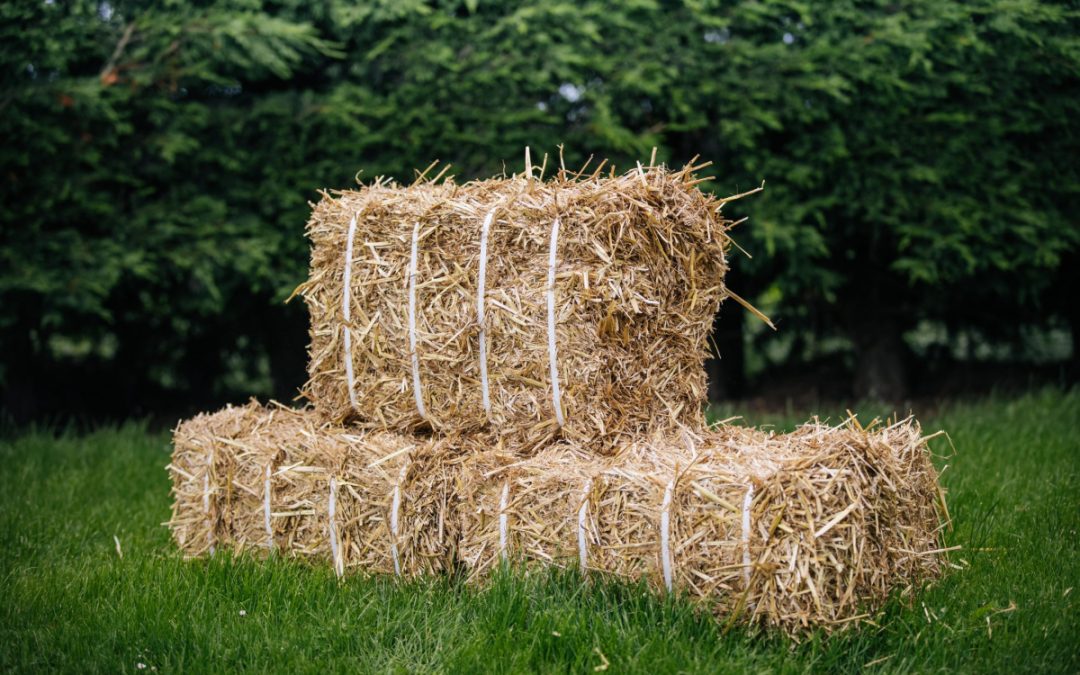Hay and haylage play a crucial role in any horse’s diet. As with us humans, each horse will have unique requirements for their nutrition. Ensuring you’re giving your horse the ideal diet is a big responsibility, but we’ll break down the factors you should be considering here allowing you to answer the all-important question: “How much hay should I feed my horse?”
- How much to feed your horse
- Size matters: weighing your horse
- Essential factors to consider
- Haylage or hay? Why it matters
How much to feed your horse
In the majority of cases, a horse needs 2-2.5% of their bodyweight as dry forage every day.
This, of course, can be changeable, but the need for this high level of forage is down to the fibre it includes.
Of course, grazing; the time out at grass and the amount of grass in the paddocks does need to be taken into consideration. Research has suggested that a horse consumes 4kg of grass every hour. Since grass is 75% moisture, a horse consumes 1kg of dry matter each hour. This should be taken off the total dry forage requirements, leaving you with the amount of hay you need to provide.
Size matters: weighing your horse
In order to calculate the amount of forage required for your horse, you’ll need to know how much your horse weighs – and the bathroom scales won’t work very well!
The best ways to determine the weight of your horse:
- Use a public weigh bridge or platform.
- You may be able to do this through your vets or feed company. There are also mobile weighing services you could use.
- Calculation
- Texas University developed a formula to generate a horse’s weight:
- (heartgirth (inches) x heartgirth (inches)) x body length (inches) ÷ 330 = weight (lbs)
- Heartgirth – measured all the way around the horse’s girth from the highest point of the wither to just behind the elbows
- Body length – measured from the point of shoulder in a straight line around to the point of the buttock on one side
- To convert this to kg, divide the figure by 2.2
- Weigh-tape
- The accuracy of weigh-tape is questionable, although it is a handy piece of kit to keep track of changes to your horse’s weight.
Essential factors to consider
As all horses are individual, your feed calculations should take into consideration their characteristics. Age, workload, health and condition should all influence your decision of how much to feed your horse.
If your horse is only turned out for a few hours, it may be worth disregarding their grass intake, particularly if it is of a poor quality or limited grass in the paddocks.
Laminitis should be another consideration. Horses prone to this disease may need their grazing restricted and changes to their volume of forage. It’s important to seek advice from your vet and nutrition experts here to ensure you are following the necessary steps to help reduce the risk of laminitis where possible.
However, for healthy horses, these factors are, of course, subject to change often with changes to your horse’s routine. Therefore, it’s key to change up your feeding regime alongside your horses routine.
Any changes you do make to their diet should be introduced gently, with a light touch and close attention. Sudden changes in diet can lead to gastrointestinal difficulties such as colic as a result of the gut requiring time to adapt it’s bacteria to deal with the changes.
Haylage or hay? Why it matters
Haylage and hay should not be classed equally when it comes to volume for feeding. Haylage has a much higher moisture content than hay, which dilutes it and the nutrients within it. Therefore, gram for gram, there are less nutrients in haylage.
If you are feeding haylage rather than hay, you’ll need 20-50% more than you would of hay to account for this difference.
Similarly, if you are soaking your hay, be mindful to consider the loss of nutrients that will take place during this process.
Conclusion
All in all, using these figures and calculations is the best way to work out a rough figure for how much hay your horse is likely to need. However, you know your horse best and should reflect on their health and lifestyle in order to decide just how much you’ll give them.
Once you’ve worked out how much hay they need, it’s important to make sure you’re giving them the best quality forage you can. This is where we come in! Explore our range of top-quality forage here, or contact us to discuss how we can help.

